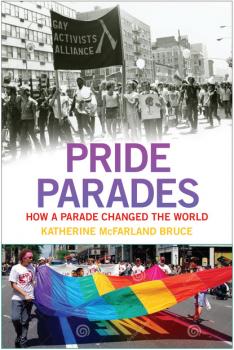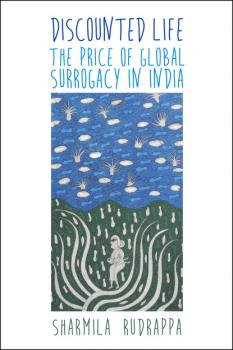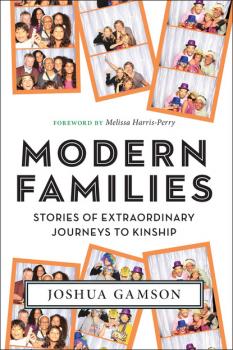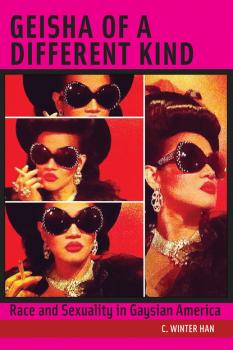ТОП просматриваемых книг сайта:
Управление, подбор персонала
Различные книги в жанре Управление, подбор персонала, доступные для чтения и скачиванияАннотация
On June 28, 1970, two thousand gay and lesbian activists in New York, Los Angeles, and Chicago paraded down the streets of their cities in a new kind of social protest, one marked by celebration, fun, and unashamed declaration of a stigmatized identity. Forty-five years later, over six million people annually participate in 115 Pride parades across the United States. They march with church congregations and college gay-straight alliance groups, perform dance routines and marching band numbers, and gather with friends to cheer from the sidelines. With vivid imagery, and showcasing the voices of these participants, Pride Parades tells the story of Pride from its beginning in 1970 to 2010. Though often dismissed as frivolous spectacles, the author builds a convincing case for the importance of Pride parades as cultural protests at the heart of lesbian, gay, bisexual, and transgender (LGBT) community. Weaving together interviews, archival reports, quantitative data, and ethnographic observations at six diverse contemporary parades in New York City, Salt Lake City, San Diego, Burlington, Fargo, and Atlanta, Bruce describes how Pride parades are a venue for participants to challenge the everyday cultural stigma of being queer in America, all with a flair and sense of fun absent from typical protests. Unlike these political protests that aim to change government laws and policies, Pride parades are coordinated, concerted attempts to improve the standing of LGBT people in American culture.On June 28, 1970, two thousand gay and lesbian activists in New York, Los Angeles, and Chicago paraded down the streets of their cities in a new kind of social protest, one marked by celebration, fun, and unashamed declaration of a stigmatized identity. Forty-five years later, over six million people annually participate in 115 Pride parades across the United States. They march with church congregations and college gay-straight alliance groups, perform dance routines and marching band numbers, and gather with friends to cheer from the sidelines. With vivid imagery, and showcasing the voices of these participants, Pride Parades tells the story of Pride from its beginning in 1970 to 2010. Though often dismissed as frivolous spectacles, the author builds a convincing case for the importance of Pride parades as cultural protests at the heart of lesbian, gay, bisexual, and transgender (LGBT) community. Weaving together interviews, archival reports, quantitative data, and ethnographic observations at six diverse contemporary parades in New York City, Salt Lake City, San Diego, Burlington, Fargo, and Atlanta, Bruce describes how Pride parades are a venue for participants to challenge the everyday cultural stigma of being queer in America, all with a flair and sense of fun absent from typical protests. Unlike these political protests that aim to change government laws and policies, Pride parades are coordinated, concerted attempts to improve the standing of LGBT people in American culture.
Аннотация
One of NPR's Best Books of 2017 The first in-depth social investigation into the development and rising popularity of Botox The American Society for Aesthetic Plastic Surgery estimates there are about two-and-a-half million Botox procedures performed annually, and that number continues to increase. The procedure is used as a preventive measure against aging and a means by which bodies, particularly women’s, can be transformed and “improved” through the appearance of youth. But why is Botox so popular, and why is aging such a terrifying concept? Botox Nation draws from engaging, in-depth interviews with Botox users and providers as well as Dana Berkowitz’s own experiences receiving the injections. The interviews reveal the personal motivations for using Botox and help unpack how anti-aging practices are conceived by, and resonate with, everyday people. Berkowitz is particularly interested in how Botox is now being targeted to younger women; since Botox is a procedure that must be continually administered to work, the strategic choice to market to younger women, Berkowitz argues, aims to create lifetime consumers. Berkowitz also analyzes magazine articles, advertisements, and even medical documents to consider how narratives of aging are depicted. She employs a critical feminist lens to consider the construction of feminine bodies and selves, and explores the impact of cosmetic medical interventions aimed at maintaining the desired appearance of youth, the culture of preventative medicine, the application of medical procedures to seemingly healthy bodies, and the growth and technological advancement to the anti-aging industry. A captivating and critical story, Botox Nation examines how norms about bodies, gender, and aging are constructed and reproduced on both cultural and individual levels. One of NPR's Best Books of 2017 The first in-depth social investigation into the development and rising popularity of Botox The American Society for Aesthetic Plastic Surgery estimates there are about two-and-a-half million Botox procedures performed annually, and that number continues to increase. The procedure is used as a preventive measure against aging and a means by which bodies, particularly women’s, can be transformed and “improved” through the appearance of youth. But why is Botox so popular, and why is aging such a terrifying concept? Botox Nation draws from engaging, in-depth interviews with Botox users and providers as well as Dana Berkowitz’s own experiences receiving the injections. The interviews reveal the personal motivations for using Botox and help unpack how anti-aging practices are conceived by, and resonate with, everyday people. Berkowitz is particularly interested in how Botox is now being targeted to younger women; since Botox is a procedure that must be continually administered to work, the strategic choice to market to younger women, Berkowitz argues, aims to create lifetime consumers. Berkowitz also analyzes magazine articles, advertisements, and even medical documents to consider how narratives of aging are depicted. She employs a critical feminist lens to consider the construction of feminine bodies and selves, and explores the impact of cosmetic medical interventions aimed at maintaining the desired appearance of youth, the culture of preventative medicine, the application of medical procedures to seemingly healthy bodies, and the growth and technological advancement to the anti-aging industry. A captivating and critical story, Botox Nation examines how norms about bodies, gender, and aging are constructed and reproduced on both cultural and individual levels.
Информация о книге
Автор произведения Dana Berkowitz
Жанр Управление, подбор персонала
Серия Intersections
Аннотация
Feminists today are re-imagining nature, biology, and matter in feminist thought and critically addressing new developments in biology, physics, neuroscience, epigenetics and other scientific disciplines. Mattering, edited by noted feminist scholar Victoria Pitts-Taylor, presents contemporary feminist perspectives on the materialist or ‘naturalizing’ turn in feminist theory, and also represents the newest wave of feminist engagement with science. The volume addresses the relationship between human corporeality and subjectivity, questions and redefines the boundaries of human/non-human and nature/culture, elaborates on the entanglements of matter, knowledge, and practice, and addresses biological materialization as a complex and open process. This volume insists that feminist theory can take matter and biology seriously while also accounting for power, taking materialism as a point of departure to rethink key feminist issues. The contributors, an international group of feminist theorists, scientists and scholars, apply concepts in contemporary materialist feminism to examine an array of topics in science, biotechnology, biopolitics, and bioethics. These include neuralplasticity and the brain-machine interface; the use of biometrical identification technologies for transnational border control; epigenetics and the intergenerational transmission of the health effects of social stigma; ADHD and neuropharmacology; and randomized controlled trials of HIV drugs.A unique and interdisciplinary collection, Mattering presents in grounded, concrete terms the need for rethinking disciplinary boundaries and research methodologies in light of the shifts in feminist theorizing and transformations in the sciences.
Информация о книге
Автор произведения Группа авторов
Жанр Управление, подбор персонала
Серия Biopolitics
Аннотация
Trauma is a universal human experience. While each person responds differently to trauma, its presence in our lives nonetheless marks a continual thread through human history and prehistory. In Critical Trauma Studies, a diverse group of writers, activists, and scholars of sociology, anthropology, literature, and cultural studies reflects on the study of trauma and how multidisciplinary approaches lend richness and a sense of deeper understanding to this burgeoning field of inquiry. The original essays within this collection cover topics such as female suicide bombers from the Chechen Republic, singing prisoners in Iranian prison camps, sexual assault and survivor advocacy, and families facing the devastation of Hurricane Katrina. As it proceeds, Critical Trauma Studies never loses sight of the way those who study trauma as an academic field, and those who experience, narrate, and remediate trauma as a personal and embodied event, inform one another. Theoretically adventurous and deeply particular, this book aims to advance trauma studies as a discipline that transcends intellectual boundaries, to be mapped but also to be unmoored from conceptual and practical imperatives. Remaining embedded in lived experiences and material realities, Critical Trauma Studies frames the field as both richly unbounded and yet clearly defined, historical, and evidence-based.
Аннотация
Winner, American Sociological Association Asia and Asian America Section Best Book on Asia/Transnational Asia Finalist, 2015 C. Wright Mills Award from the Society for the Study of Social Problems India is the top provider of surrogacy services in the world, with a multi-million dollar surrogacy industry that continues to grow exponentially, as increasing numbers of couples from developed nations look for wombs in which to grow their babies. Some scholars have exulted transnational surrogacy for the possibilities it opens for infertile couples, while others have offered bioethical cautionary tales, rebuked exploitative intended parents, or lamented the exploitation of surrogate mothers—but very little is known about the experience of and transaction between surrogate mothers and intended parents outside the lens of the many agencies that control surrogacy in India. Drawing from rich interviews with surrogate mothers and egg donors in Bangalore, as well as twenty straight and gay couples in the U.S. and Australia, Discounted Life focuses on the processes of social and market exchange in transnational surrogacy. Sharmila Rudrappa interrogates the creation and maintenance of reproductive labor markets, the function of agencies and surrogacy brokers, and how women become surrogate mothers. Is surrogacy solely a labor contract for which the surrogate mother receives wages, or do its meanings and import exceed the confines of the market? Rudrappa argues that this reproductive industry is organized to control and disempower women workers and yet her interviews reveal that, by and large, the surrogate mothers in Bangalore found the experience life affirming. Rudrappa explores this tension, and the lived realities of many surrogate mothers whose deepening bodily commodification is paradoxically experienced as a revitalizing life development. A detailed and moving study, Discounted Life delineates how local labor markets intertwine with global reproduction industries, how Bangalore’s surrogate mothers make sense of their participation in reproductive assembly lines, and the remarkable ways in which they negotiate positions of power for themselves in progressively untenable socio-economic conditions.
Аннотация
Watch Georgiann Davis in National Geographic's Gender Revolution documentary with Katie Couric A personal, compelling perspective on how medical diagnoses can profoundly hurt, or help, the lived experiences of entire communities Winner, 2017 Sex and Gender Distinguished Book Award, presented by the American Sociological Association Winner, 2016 Donald Light Award for the Applied or Public Practice of Medical Sociology, presented by the American Sociological Association When sociologist Georgiann Davis was a teenager, her doctors discovered that she possessed XY chromosomes, marking her as intersex. Rather than share this information with her, they withheld the diagnosis in order to “protect” the development of her gender identity; it was years before Davis would see her own medical records as an adult and learn the truth. Davis’ experience is not unusual. Many intersex people feel isolated from one another and violated by medical practices that support conventional notions of the male/female sex binary which have historically led to secrecy and shame about being intersex. Yet, the rise of intersex activism and visibility in the US has called into question the practice of classifying intersex as an abnormality, rather than as a mere biological variation. This shift in thinking has the potential to transform entrenched intersex medical treatment. In Contesting Intersex, Davis draws on interviews with intersex people, their parents, and medical experts to explore the oft-questioned views on intersex in medical and activist communities, as well as the evolution of thought in regards to intersex visibility and transparency. She finds that framing intersex as an abnormality is harmful and can alter the course of one’s life. In fact, controversy over this framing continues, as intersex has been renamed a ‘disorder of sex development’ throughout medicine. This happened, she suggests, as a means for doctors to reassert their authority over the intersex body in the face of increasing intersex activism in the 1990s and feminist critiques of intersex medical treatment. Davis argues the renaming of ‘intersex’ as a ‘disorder of sex development’ is strong evidence that the intersex diagnosis is dubious. Within the intersex community, though, disorder of sex development terminology is hotly disputed; some prefer not to use a term which pathologizes their bodies, while others prefer to think of intersex in scientific terms. Although terminology is currently a source of tension within the movement, Davis hopes intersex activists and their allies can come together to improve the lives of intersex people, their families, and future generations. However, for this to happen, the intersex diagnosis, as well as sex, gender, and sexuality, needs to be understood as socially constructed phenomena. A personal journey into medical and social activism, Contesting Intersex presents a unique perspective on how medical diagnoses can affect lives profoundly. Ask us about setting up a Skype-in with the author for your class
Информация о книге
Автор произведения Georgiann Davis
Жанр Управление, подбор персонала
Серия Biopolitics
Аннотация
A personal, intimate account of the extraordinary ways that today’s families are being created. [b][/b]From adoption and assisted reproduction, to gay and straight parents, coupled and single, and multi-parent families, the stories in Modern Families explain how individuals make unconventional families by accessing a broad range of technological, medical and legal choices that expand our definitions of parenting and kinship. Joshua Gamson introduces us to a child with two mothers, made with one mother’s egg and the sperm of a man none of them has ever met; another born in Ethiopia, delivered by his natural grandmother to an orphanage after both his parents died in close succession, and then to the arms of his mother, who is raising him solo. These tales are deeply personal and political. The process of forming these families involved jumping tremendous hurdles—social conventions, legal and medical institutions—with heightened intention and inventiveness, within and across multiple inequities and privileges. Yet each of these families, however they came to be, shares the same universal joys that all families share. A companion for all those who choose to navigate the world of modern kinship, Modern Families provides a “fascinating look at the remarkable range of experiences that is broadening the very idea of family” (Booklist). A personal, intimate account of the extraordinary ways that today’s families are being created. [b][/b]From adoption and assisted reproduction, to gay and straight parents, coupled and single, and multi-parent families, the stories in Modern Families explain how individuals make unconventional families by accessing a broad range of technological, medical and legal choices that expand our definitions of parenting and kinship. Joshua Gamson introduces us to a child with two mothers, made with one mother’s egg and the sperm of a man none of them has ever met; another born in Ethiopia, delivered by his natural grandmother to an orphanage after both his parents died in close succession, and then to the arms of his mother, who is raising him solo. These tales are deeply personal and political. The process of forming these families involved jumping tremendous hurdles—social conventions, legal and medical institutions—with heightened intention and inventiveness, within and across multiple inequities and privileges. Yet each of these families, however they came to be, shares the same universal joys that all families share. A companion for all those who choose to navigate the world of modern kinship, Modern Families provides a “fascinating look at the remarkable range of experiences that is broadening the very idea of family” (Booklist).
Аннотация
Over the last four decades, the fashion modeling industry has become a lightning rod for debates about Western beauty ideals, the sexual objectification of women, and consumer desire. Yet, fashion models still captivate, embodying all that is cool, glam, hip, and desirable. They are a fixture in tabloids, magazines, fashion blogs, and television. Why exactly are models so appealing? And how do these women succeed in so soundly holding our attention? In This Year’s Model, Elizabeth Wissinger weaves together in-depth interviews and research at model castings, photo shoots, and runway shows to offer a glimpse into the life of the model throughout the 20th and 21st centuries. Once an ad hoc occupation, the “model life” now involves a great deal of physical and virtual management of the body, or what Wissinger terms “glamour labor.” Wissinger argues that glamour labor—the specialized modeling work of self-styling, crafting a ‘look,’ and building an image—has been amplified by the rise of digital media, as new technologies make tinkering with the body’s form and image easy. Models can now present self-fashioning, self-surveillance, and self-branding as essential behaviors for anyone who is truly in the know and ‘in fashion.’ Countless regular people make it their mission to achieve this ideal, not realizing that technology is key to creating the unattainable standard of beauty the model upholds—and as Wissinger argues, this has been the case for decades, before Photoshop even existed. Both a vividly illustrated historical survey and an incisive critique of fashion media, This Year’s Model demonstrates the lasting cultural influence of this unique form of embodied labor.
Аннотация
In gay bars and nightclubs across America, and in gay-oriented magazines and media, the buff, macho, white gay man is exalted as the ideal—the most attractive, the most wanted, and the most emulated type of man. For gay Asian American men, often viewed by their peers as submissive or too ‘pretty,’ being sidelined in the gay community is only the latest in a long line of racially-motivated offenses they face in the United States.Repeatedly marginalized by both the white-centric queer community that values a hyper-masculine sexuality and a homophobic Asian American community that often privileges masculine heterosexuality, gay Asian American men largely have been silenced and alienated in present-day culture and society. In Geisha of a Different Kind, C. Winter Han travels from West Coast Asian drag shows to the internationally sought-after Thai kathoey, or “ladyboy,” to construct a theory of queerness that is inclusive of the race and gender particularities of the gay Asian male experience in the United States. Through ethnographic observation of queer Asian American communities and Asian American drag shows, interviews with gay Asian American men, and a reading of current media and popular culture depictions of Asian Americans, Han argues that gay Asian American men, used to gender privilege within their own communities, must grapple with the idea that, as Asians, they have historically been feminized as a result of Western domination and colonization, and as a result, they are minorities within the gay community, which is itself marginalized within the overall American society. Han also shows that many Asian American gay men can turn their unusual position in the gay and Asian American communities into a positive identity. In their own conception of self, their Asian heritage and sexuality makes these men unique, special, and, in the case of Asian American drag queens, much more able to convey a convincing erotic femininity. Challenging stereotypes about beauty, nativity, and desirability, Geisha of a Different Kind makes a major intervention in the study of race and sexuality in America.
Информация о книге
Автор произведения C. Winter Han
Жанр Управление, подбор персонала
Серия Intersections
Аннотация
At the center of the “war on women” lies the fact that women in the contemporary United States are facing more widespread and increased surveillance of their reproductive health and decisions. In recent years states have passed a record number of laws restricting abortion. Physicians continue to sterilize some women against their will, especially those in prison, while other women who choose to forego reproduction cannot find physicians to sterilize them. While these actions seem to undermine women’s decision-making authority, experts and state actors often defend them in terms of promoting women’s autonomy. In Governed through Choice, Jennifer M. Denbow exposes the way that the notion of autonomy allows for this apparent contradiction and explores how it plays out in recent reproductive law, including newly enacted informed consent to abortion laws like ultrasound mandates and the regulation of sterilization. Denbow also shows how developments in reproductive technology, which would seem to increase women’s options and autonomy, provide even more opportunities for state management of women’s bodies. The book argues that notions of autonomy and choice, as well as transformations in reproductive technology, converge to enable the state’s surveillance of women and undermine their decision-making authority. Yet, Denbow asserts that there is a way forward and offers an alternative understanding of autonomy that focuses on critique and social transformation. Moreover, while reproductive technologies may heighten surveillance, they can also help disrupt oppressive norms about reproduction and gender, and create space for transformation. A critically important analysis, Governed through Choice is a trailblazing look at how the law regulates women’s bodies as reproductive sites and what can be done about it.










